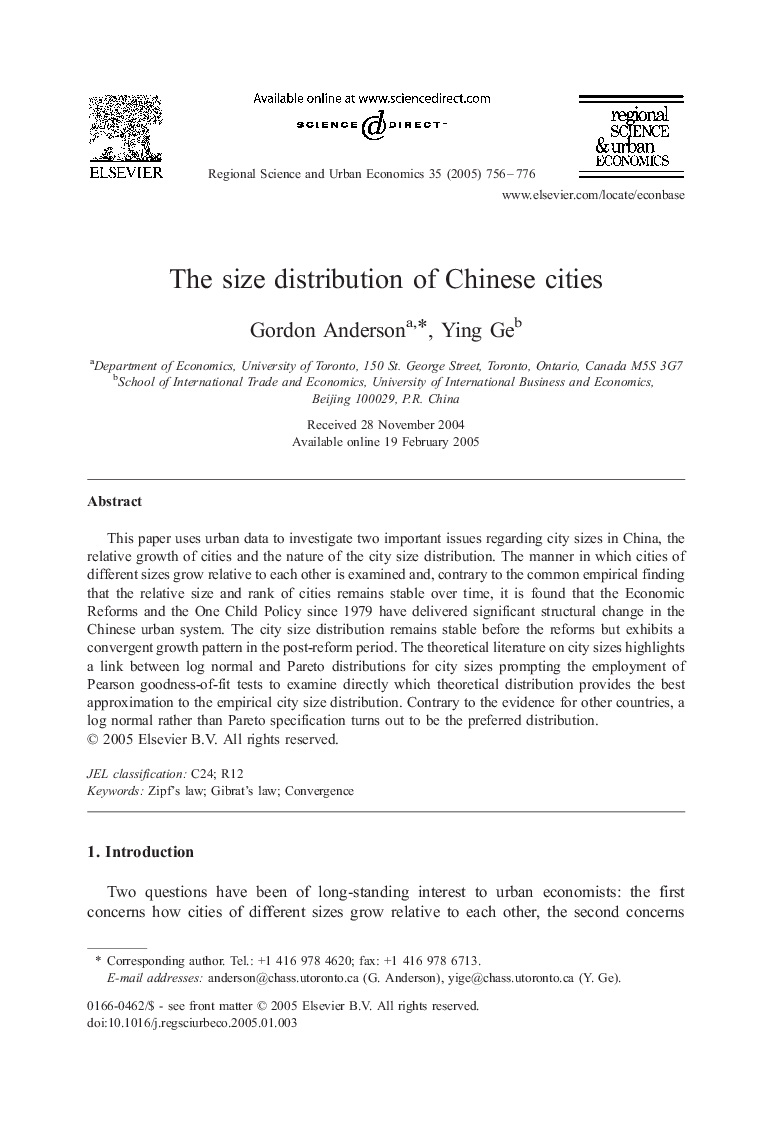| Article ID | Journal | Published Year | Pages | File Type |
|---|---|---|---|---|
| 10482463 | Regional Science and Urban Economics | 2005 | 21 Pages |
Abstract
This paper uses urban data to investigate two important issues regarding city sizes in China, the relative growth of cities and the nature of the city size distribution. The manner in which cities of different sizes grow relative to each other is examined and, contrary to the common empirical finding that the relative size and rank of cities remains stable over time, it is found that the Economic Reforms and the One Child Policy since 1979 have delivered significant structural change in the Chinese urban system. The city size distribution remains stable before the reforms but exhibits a convergent growth pattern in the post-reform period. The theoretical literature on city sizes highlights a link between log normal and Pareto distributions for city sizes prompting the employment of Pearson goodness-of-fit tests to examine directly which theoretical distribution provides the best approximation to the empirical city size distribution. Contrary to the evidence for other countries, a log normal rather than Pareto specification turns out to be the preferred distribution.
Related Topics
Social Sciences and Humanities
Economics, Econometrics and Finance
Economics and Econometrics
Authors
Gordon Anderson, Ying Ge,
